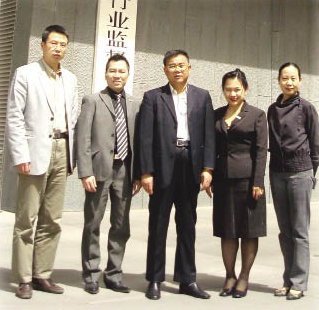
Aspects of Asia is a new section in the ACAMS Today that will focus on AML/CTF developments and challenges encountered in the Asia region. In the last five years, all new full membership members of the Financial Action Task Force (FATF) have come from the Asia region, namely China, South Korea and India. Aspects of Asia will provide government regulators and industry practitioners in Asia a platform to share their knowledge, experience and expertise in this sector.
Development of AML/CTF in Mainland China
China has made great strides in implementing AML/CTF measures in a very short period. The Country's first Mutual Evaluation report of 2007 noted the following:
"China first began seriously focusing on AML/CTF issues in 2003, with the enactment of three sets of regulations that imposed some relevant AML/CTF requirements on the banking, trust and finance sectors. In 2004, the People's Bank of China (PBOC) began conducting on-site AML compliance inspections across the country, and also filed an application for FATF membership. Shortly after becoming an observer to the Financial Action Task Force (FATF) in 2005, China enacted its AML/CTF law and two related regulations in October 2006 which are applicable to all financial institutions."1
China became a full member in June 2007 and has actively continued to refine and enhance its AML/CTF regime.
Hue Dang, CAMS, head of Asia for ACAMS, recently spoke with a number of prominent regulators and industry practitioners to share their experiences, thoughts and visions for further development of AML/CTF in China. These individuals were asked the following questions:
- How did you first get started in the AML industry?
- What is your current position and responsibilities?
- What are the current AML issues in China? Which issue is more pertinent at this time?
- What is your vision for China's progress in AML compliance? While China has made great strides in a very short period, what are the next steps that China would need to take to further enhance its recognition for its commitment in the fight against money laundering and terrorist-financing?
First Interview: People's Bank of China (PBOC)
Hue's first interview was with a team from the People's Bank of China. She had the honor of conducting the interview with director Zhang Yan of the General Office, Anti-Money Laundering Bureau, Beijing.2 Others in attendance were Shi Yongyan, PhD, deputy director, General Office, Anti-Money Laundering Bureau, and Yao Xiang, deputy director, International Cooperation Division, Beijing Training Institution.
Director Zhang said that she joined the AML Bureau in 2004 because she relished the opportunity and the challenge of laying the foundation for the relatively new field of AML in China. Her previous work involved pioneering work in challenging fields, and she is therefore motivated to do well in her role in developing the foundations of AML/CTF for China. She is ever-focused on improving her knowledge on this issue.
Her main focus at present is leading the General Office (GO), a multi-function operation in charge of preparing, publishing and delivering AML research, as well as implementing AML regulations. The GO also publishes the national AML report, which reports on AML development and trends in China. In 2009, the GO also was mandated to develop and provide internal training to PBOC staff, with a focus on internal and fundamental AML knowledge.
Zhang believes the current challenges to AML include developing an approach to analyzing non-financial information received by PBOC and instituting training for regulatory and financial institutions. Effective AML training requires a tiered approach, with different levels tailored to the varying degrees of experience and knowledge required by different industry participants. She believes there are gaps in the current AML regulations of China and that the current framework needs to be tested, as reflected in real cases, in order to see what improvements are required to make it more practical and enforceable.
Zhang is proud of the development of CDD/KYC practices in China, as all financial institutions (FIs) now have a link to the database maintained by the Public Security Bureau. The database is considered to be the most extensive in China, with comprehensive information on individuals. With this link, FIs are able to screen customers during the account-opening process to assist them in improving their CDD/KYC processes.
She views the ongoing challenge for China as the difference in focus between the industry and the regulators. The industry is more focused on compliance, whereas the regulator is focused on where money-laundering is actually taking place and where the risks lie. In communicating with the industry, the PBOC faces the challenge of getting practitioners to share the full picture of AML risks and not just information on where they are compliant. The PBOC's vision is to build closer ties with the industry through one-on-one communication between regulators and practitioners in order to encourage both groups to see themselves on the same team, thus leading to improved knowledge-sharing.
Second Interview: Geng Wei, Chief Compliance Officer, Bank of China

Geng is the chief compliance officer, Law and Compliance Department at the Bank of China. He received his PhD in Law from Beijing University Law School in 1995. Geng has focused on the legal and compliance areas in the banking sector for many years and has published dozens of papers. His previous work included serving as a judge. He also serves as a member of the Legal Working Committee of the China Banking Association and deputy director of the Banking Law Research Association of the China Law Society.
Geng's interest in compliance stems from a 2005 trip to the U.S. as a visiting researcher focusing on compliance in the commercial banking industry. As such, he believes that most criminal activities are facilitated by the banks and that banks therefore have a social responsibility to fight against money laundering.
Geng said that the banking industry's perspective on AML/CTF as a cost-center is a misperception that needs to be overcome. He believes banks should be required to separate the costs of AML/CTF compliance from other costs within the bank. Geng believes banks must raise awareness of AML/CTF as a social responsibility in order to gain the invaluable trust of clients and fellow banking institutions. The current global AML/CTF issues encountered by commercial banks demonstrate the need for a continued obligation to fight money-laundering and terrorist-financing.
Within the Bank of China, Geng sees transaction-monitoring as one of its greatest challenges. The volume and threshold reporting dictated by a rules-based approach is not sufficiently accurate, as it produces too many false positives, resulting in the uninformative filing of STRs. The risk-based approach announced and adopted by the PBOC in March 2010 should enhance the usefulness of STRs going forward. However, the shift to the risk-based approach further increases compliance challenges, as staff require further training to develop their skills and knowledge to evaluate and analyze data effectively. In its future planning, Geng anticipates that Bank of China will need to invest in technology solutions to address the issues of PEPs, STR filings and other challenges of screening and monitoring customers, while at the same time ensuring the level of employee training is up to the global standard of information and knowledge-sharing.
Geng recognizes and applauds the continuous efforts of the PBOC in improving its role in AML/CTF compliance since China's full membership in FATF. He believes one of the key legislative challenges to effective implementation of China's AML/CTF regime lies in banks' inability to freeze accounts upon the detection of well-supported and documented suspicious activities, especially the accounts identified as controlled by terrorists. Currently, the ability to freeze a customer account lies with the courts, thereby inhibiting the effectiveness of bank AML programs, and at the same time, increasing the compliance risk of the bank.
Third Interview: China Banking Regulatory Commission (CBRC)3
Although AML/CTF is in the purview of the PBOC, it is also invaluable to understand the view of the banking industry's other main regulator, the CBRC, which focuses on fraud and other illegal activities through its Anti-Illegal Fund Department. Given the convergence of efforts in anti-money laundering and anti-fraud in the world of financial crime, the CBRC's regulatory efforts in fraud-based activities and its interaction with the PBOC provides the basis for the next interview.

Hue conducted an interview with Liao Youming, director-general of CBRC's Staff Compliance Department. Others in attendance were Wang, director, Anti-illegal Fund Department and Liu Xiangling, deputy director, Anti-illegal Fund Department.
Director-General Liao has been with the CBRC since its inception in 2003. Prior to joining the CBRC, he spent more than 30 years with PBOC, which he joined after graduating from the university. While at PBOC, he worked as a supervisor with a focus on internal controls and internal audit within the audit function.
CBRC's focus on anti-illegal funds provides the basis for numerous interactions with the PBOC. Weekly communications plus an annual meeting to establish a regular communication channel between the two regulatory bodies. In addition, the PBOC and CBRC meet together with the State Council every 10 days to further enhance communication between these parties. The CBRC also works closely with the Public Security Bureau in its investigations of fraud cases, and provides internal training for both CBRC and Public Security Bureau staff to further enhance understanding by both parties of the investigative process.
The CBRC sees the greatest challenge in AML/CTF as the tracking of such activities on a global scale. Statistics of interest include the total number of AML/CTF cases occurring each year and the identifiable characteristics and red flags that lead to detection and investigation of these cases. Given that most illegal proceeds must be funneled through the banking system, the CRBC is keen to learn more of the global banking industry's efforts in detecting these activities.
The CBRC is proud of the progress of China's banking sector in improving CDD/KYC practices, which has been facilitated by banks' link to the Public Security Bureau's extensive database on individuals. Accessing the background information on prospective customers with the use of their identification numbers provides a useful reference point during the account-opening process.
An ongoing challenge for China is the practical implementation of its AML/CTF regime. This is an ever-evolving process and Director General Liao believes China is on track to achieve this goal.
- FATF-GAFI, "Summary of First Mutual Evaluation Report on Anti-Money Laundering and Combating the Financing of Terrorism: People's Republic of China," 27 June 2007, p.2
- China's financial intelligence unit (FIU) is situated in the PBOC. The FIU function is divided between two operational units of the PBOC under a single deputy governor—the Anti-Money Laundering Bureau (AMLB) and the China Anti-Money Laundering Monitoring & Analysis Center (CAMLMAC). CAMLMAC was established in April 2004. Its function is to receive and analyze suspicious transaction reports (STRs) and large value transaction reports (LVTs), and to act as the central point of contact for foreign FIUs. The AMLB, which was established in October 2003, organizes and co-ordinates China's AML affairs, and carries out administrative investigation, dissemination of latest policy changes and policy oversight. While CAMLMAC and the AMLB work together to conduct follow-up analysis on LVTs and STRs, most of the additional analysis and dissemination functions are carried out by the AMLB. Excerpted from FATF-GAFI, "Summary of First Mutual Evaluation Report on Anti-Money Laundering and Combating the Financing of Terrorism: People's Republic of China," 27 June 2007, pp.3-4
- The CBRC is a regulatory agency authorized by the State Council to regulate the banking sector. The main functions of the CBRC are to:
– Formulate supervisory rules and regulations governing the banking institutions.
– Authorize the establishment, change, termination and business scope of the banking institutions.
– Conduct on-site examination and off-site surveillance of the banking institutions, as well as take enforcement actions against banks violating the laws.
– Conduct fit-and-proper tests on the senior managerial personnel of the banking institutions.
– Compile and publish statistics and reports of the overall banking industry in accordance with relevant regulations.
– Provide proposals on the resolution of problem deposit-taking institutions in consultation with relevant regulatory authorities.
– Being responsible for the administration of the supervisory boards of the major state-owned banking institutions, and other functions delegated by the State Council.
(from http://www.cbrc.gov.cn/english/info/yjhjj/index.jsp)










